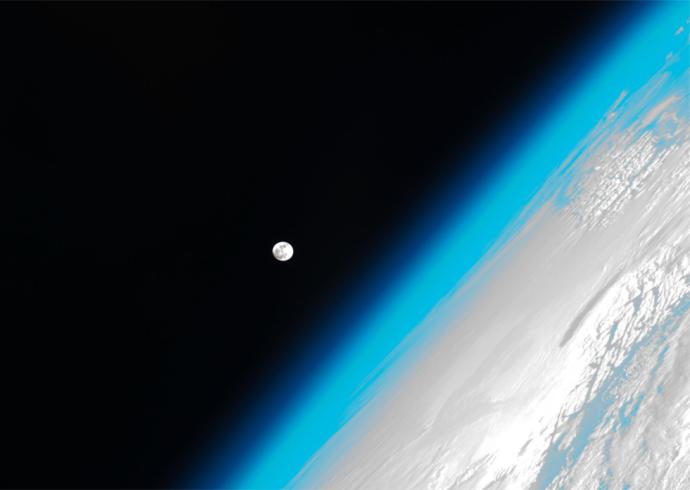An Atmosphere is a thin layer of gas which surrounds a planet or moon. The gravity of a planet or moon holds the Atmosphere in place. Small planets and moons have low mass and a weak gravitational pull. This means they tend not to hold onto an atmosphere.
The atmosphere is thinner the higher you are from the surface of a planet. This is why it becomes harder to breathe when you're at the top of a mountain. It's one reason why we put telescopes on mountains. A thick atmosphere can blur our images. We call this effect astronomical seeing. Students can learn more about this in our Seeing Workshop.

On Earth our atmosphere protects us from harmful radiation from the Sun. It contains lots of nitrogen and oxygen. It provides us with air to breathe. It's the only atmosphere we have found that we can breathe. Other planets have atmospheres made of gasses like hydrogen or helium. There, if life has evolved, it might 'breathe' these gasses.
